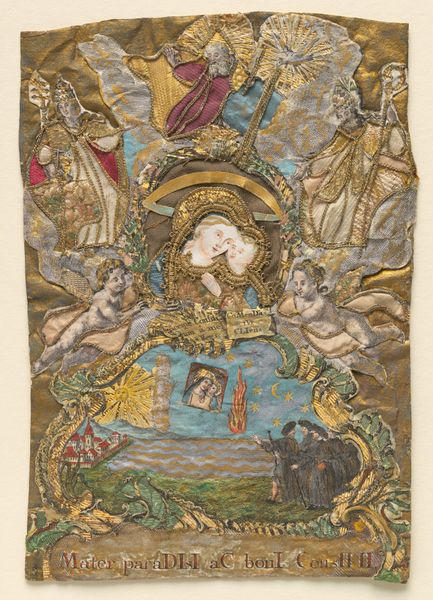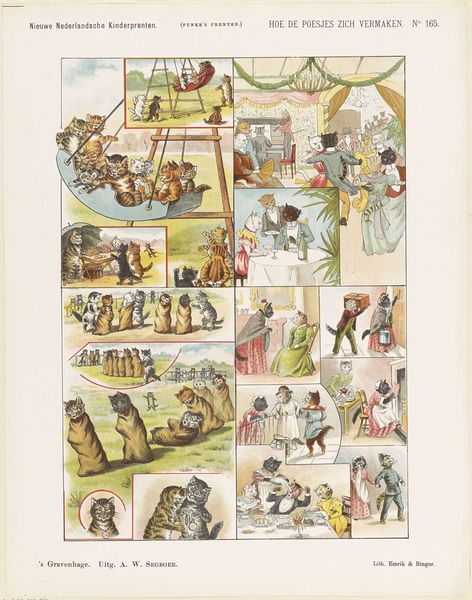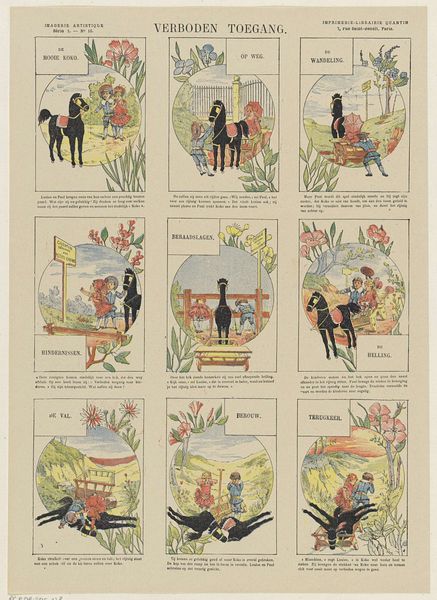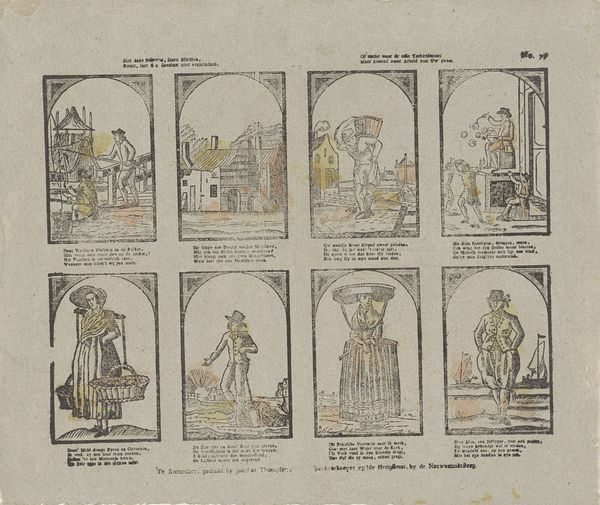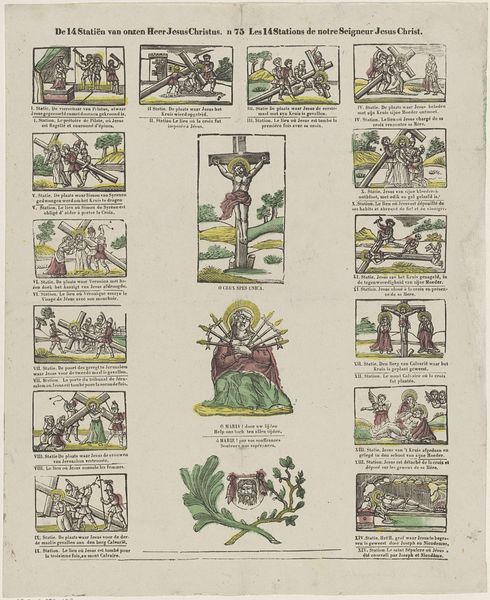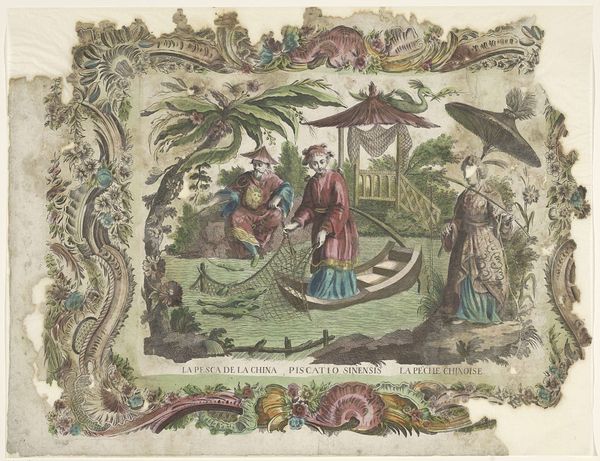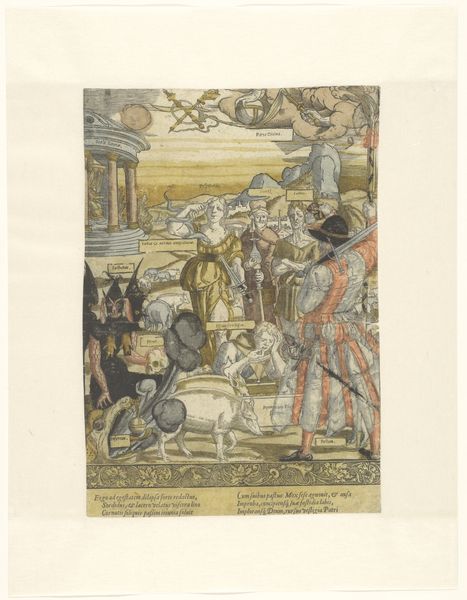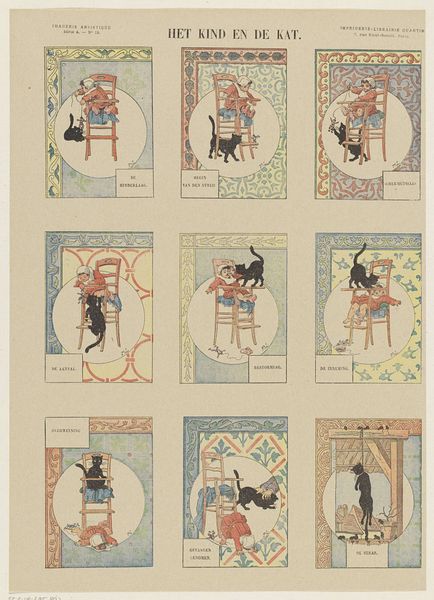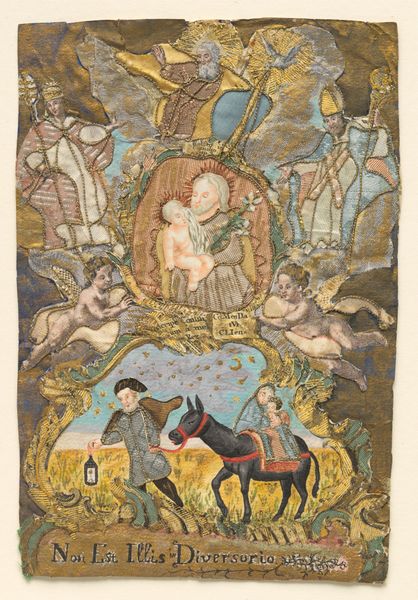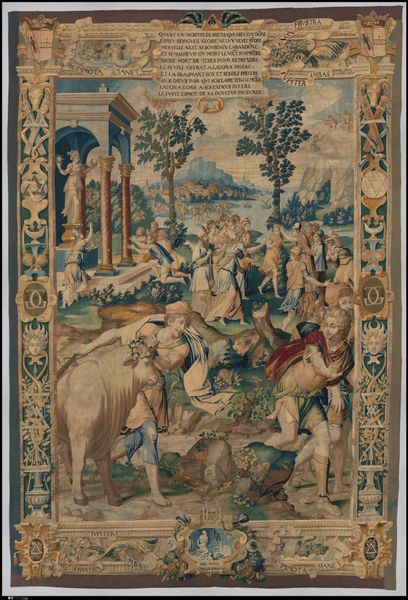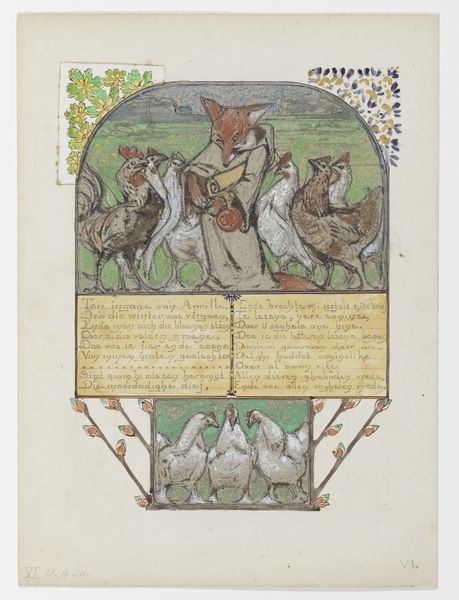
Dimensions: height 368 mm, width 264 mm
Copyright: Rijks Museum: Open Domain
Felix Lacaille made this chromolithograph, De Rajah, using stones to transfer an image through colored inks. This image shows a Rajah at the top, and below him, a scene of labor to pull an elephant. Chromolithography allowed for vibrant color images to be printed quickly and at a low cost. The success of a chromolithograph relied on the skills of draughtsmen to prepare the stones, and printers to transfer the stones to paper, balancing the inks and pressure to create a clear and lasting impression. The images, with their layered scenes, draw the viewer’s eye across the page to consume the narrative from top to bottom. Chromolithography democratized image making, allowing for the mass production of visual culture. But it also demanded a highly specialized labor force to create the stones and operate the presses. Consider how this print reflects the industrialization of art, enabling art to be made available to a mass market. The images, with their layered scenes, draw the viewer’s eye across the page to consume the narrative from top to bottom.
Comments
No comments
Be the first to comment and join the conversation on the ultimate creative platform.
